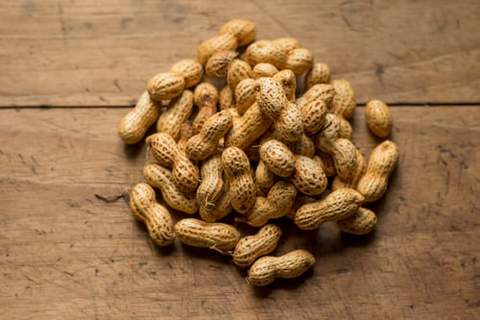By Aswathy Gopalakrishnan
Do you know that 1 out of every 13 children is allergic to at least one food? I didn’t have much knowledge about food allergies until I married someone who has an egg allergy. When he told me that he’s been allergic to egg since childhood, all I could think was, ‘Oh, he cannot eat an omelet or a bullseye.’
I did some research and realized – there are a million foods that use egg. The symptoms of allergies are not as mild as I thought. This is why it is essential to be aware of the various types of food allergies in children and how to recognize each one of them to avoid the associated risks. Infact baby allergy to egg (white or yolk) is extremely common. Earlier parents were asked to wait until the age of 2 to get them started on eggs. The most common signs and symptoms of egg allergy is mild is skin rashes, hives, nasal congestion, and vomiting or other digestive problems.
At 6-months, your baby should be eating a bowl full of combinations of healthy ingredients best suited for all the dietary needs that have non-allergens also suited for those little tummies.
Common child allergies:
What is food allergy, and what causes it?
A food allergy is instigated when our immune system overreacts to a harmless food protein, an allergen. The reaction occurs shortly after having the food, and the severity of symptoms can vary from mild to life-threatening.
According to leading Diet Consultant & Nutrition and Health educator, Aditi A Mehrotra, family history can play a role in the development of a food allergy. In this case, seek advice from a doctor or healthcare provider before offering that particular food to the baby. She suggests going very slow while including these allergenic foods in the diet and introducing them one at a time. This way, it’s easier to identify the source of allergy without difficulty.
It is significant to know that food allergy is different from food intolerance. Although some of the symptoms may be similar, food intolerance does not affect the immune system.
Common food allergies in babies
According to a popular parenting website, VeryWellFamily, some common food allergies in babies are more likely to cause an allergic reaction than others.
When starting an infant on solids or introducing new foods to your baby, there are some common allergies every parents should keep an eye out for. If you have a family history of allergies – better still to consult the pediatrician (before drawing a food chart for your 6-month-old baby). Common allergies related to family history include eczema and asthma.
Common food allergies in children (and babies):
A variety of foods can cause food allergies in children. Yet, the following foods are categorized are the most common child allergies:
1. Milk

It is the most common food allergy in infants and young children. Although some children may outgrow their allergy as they grow up.
2. Egg

Egg allergy is yet another common food allergy in children. Some kids are allergic to uncooked or under-cooked eggs alone. They may outgrow the allergy as they grow up. It is due to this reason doctors ask to give hard-boiled eggs while introducing eggs to children. However, few continue to have it throughout their lives.
3. Peanuts

Peanut allergy is the most common food allergy in children under age 18 and the second-most common food allergy in adults. According to the Food Allergy Research and Education, peanut allergy is the only food allergy for which the US Food and Drug Administration has an approved treatment. Untreated peanut allergy persists lifelong.
4. Soy
Soya bean, a member of the legume family, is another common allergy found in babies and children. Being allergic to soy does not mean you have a greater chance of being allergic to another legume, including peanut.
5. Wheat
According to the Food Allergy Research and Education, wheat allergy is most often reported in young children and usually outgrown before adulthood. One of their studies shows that two-thirds of children with a wheat allergy outgrow it by age 12.
Although not an allergy, intolerance to gluten is a common problem found in many. Gluten is a protein found in wheat, barley, and rye. This can lead to adverse conditions like Celiac disease which can affect the digestive system. The symptoms include bloating, headache, diarrhea, abdominal pains, fatigue, anemia, weight loss, and anxiety. The best way to deal with it is to seek medical help and follow a gluten-free diet.
6. Tree nuts
The six tree nuts that commonly cause allergies in children and adults are walnut, almond, hazelnut, pecan, cashew, and pistachio. Peanut is not considered as a tree nut as it grows underground and is a legume. Tree nuts are also different from seed allergens such as sesame, sunflower, poppy, and mustard, which do not grow on trees.
7. Other allergens
The above six are the top most common food allergies in children. However, there are a few more allergens, such as crustaceans and fish. These are not very common in children, and people usually experience their first allergic reaction when they are adults. Also, few are allergic to plant seeds like sesame, sunflower, poppy, etc.
What are the food allergy symptoms in children?
According to Aditi, the mother’s instincts would know if the child is in discomfort. The baby may show one or more of the following signs in case of an allergy:
1. Increased irritability
2. Tummy ache
3. Skin rash or hives which are red raised goosebumps on the body
4. Vomiting
If the child disagrees with the food, there would be immediate throwing up of that particular food. In such scenarios, it is best to avoid giving anything orally and seek immediate advice from the doctor.
As per the Food Allergy Research and Education, very young children or toddlers may put their hands in their mouths or pull or scratch at their tongues in response to a reaction. They also suggest that in case of extreme reactions where the child displays symptoms of anaphylaxis within minutes to hours of ingesting food, seek immediate medical treatment. They have identified the symptoms of anaphylaxis as:
1. Difficulty breathing
2. Loss of consciousness
3. Pale or blue skin
4. Repetitive cough, wheezing
5. Hives, redness, or itching
6. Diarrhea or vomiting
7. Swelling of lips or tongue
8. Itchy/runny nose, sneezing
How to treat food allergies in children?
Currently, there are no cures for food allergy. The best way to manage the allergy is strict avoidance of the allergen food. Although in case of a reaction, medicines can treat both minor and severe food allergy symptoms.
1. Doctors may prescribe antihistamines to treat symptoms of an allergic reaction to suppress the histamines produced during the reaction.
2. If it’s a severe allergy, the doctor may suggest carrying an epinephrine auto-injector to use in case of an emergency. He will educate you on how and when to use it while prescribing it. Parents or caregivers should always know where the epinephrine is, have easy access to it, and must know how to give the shot.
Few precautions that I personally take to avoid any allergies are as follows:
1. Read the ingredients label of packaged products to make sure the product doesn’t contain the allergen or not manufactured on a faculty that uses it. It’s safer to avoid purchasing foods that don’t have proper labels or allergen info provided.
2. While eating outside, double-check on the ingredients of the food you are planning to order. Most restaurants have an allergen menu available at stores or online to help people who have allergies.
3. It’s safer to use separate vessels for cooking the allergen food, in case other members of the family want to eat it.
Conclusion:
It’s normal to be worried or overwhelmed when your baby is diagnosed with a food allergy. But with proper precautions to avoid the allergen and essential preparations to handle it in case of an emergency, we can manage the food allergy most efficiently.
About the author: The article is written by Aswathy Gopalakrishnan, who is an in-house expert in dealing with an egg-allergic husband and a lactose-intolerant toddler. Over the years, it has become more of a habit for me to check the ingredients label before buying any food product, literally interrogate the server for the allergen menu info, and organize the kitchen vessels and foods to avoid any friction. I hope this article helps you too to get a precise idea of various food allergies and the ways to deal with them.



